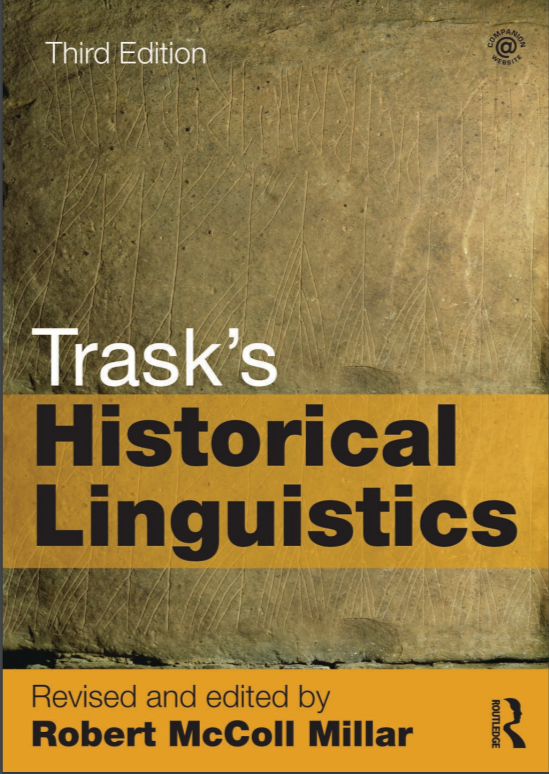-
The Afro-Asiatic Language Phylum is a Racist, White Construction, and The Ancestral language of the Phylum Can Never Be Reconstructed Due To The Problematic Issue Of Demonstrating Sound Correspondences According to Timely Peer Reviewed Historical Linguistic TextBook by Trask
By
Netjer NebDr. Diop and Dr. Obenga are not the only linguistic experts who have written about the unscientific nature of the ‘Afro-Asiatic’ phylum. Numerous historical linguists ‘Black’ and ‘white’ have written on this racist problematic phylum from 1966 to date in 2023. According to the peer-reviewed historical linguistic textbook by renowned European historical linguist Larry Trask, the Afro-Asiatic phylum would be a racist and ‘white’ language phylum that groups languages based on skin color. Let us observe,
(a) The ‘white’ Afro-Asiatic family
Trask states,
“It is clear,
for example, that one of the reasons for the long resistance to the inclusion of Chadic
in Afro-Asiatic was that Chadic speakers are incontrovertibly black, while speakers
of the best-known Afro-Asiatic languages are white. The nineteenth-century prejudice
that regarded language as intimately bound up with culture and with race – a
prejudice that has perhaps not entirely disappeared – made it hard for the linguists of
the time to accept ‘black’ languages in a ‘white’ family”(Trask, 2015: 223).Trask states,
“While nineteenth-century linguists were inclined to see language as part and parcel of culture and race, modern linguists have, in complete
contrast, generally regarded it as a central tenet that languages show no particular
tendency to correspond to genetic or physical differences – recall the black Chadic
speakers in the ‘white’ Afro-Asiatic family” (Trask, 2015: 363).As we observe, Afro-Asiatic was originally an invention of racism and prejudice considered a ‘white’ family according to this historical linguistic textbook. This is not the only problematic issue with this fabricated imperialistic ‘phylum’. The methodology of Afro-Asiatic would fall short of the principles of the comparative linguistic method for the obscurity of sound correspondences would make it IMPOSSIBLE and beyond the scope of linguists to reconstruct the ancestral parent of the phylum. Trask elaborates that linguists will NEVER be able to reconstruct proto-Afro-Asiatic due to time depth making it impossible to form sound correspondences within the supposed daughter languages.
(b) Proto-Afro-Asiatic will NEVER be reconstructed
Trask, states,
“In the Afro-Asiatic case, the
problem appears to be the time depth: the ancestral language is thought to have been spoken at least 8,000 years ago, and the mass of accumulated changes in all the daughters is
so great that systematic correspondences and grammatical parallels are just at the very edge
of our ability to reconstruct, or perhaps even beyond, and so we may never have a satisfactory picture of Proto-Afro-Asiatic” (Trask, 2015: 204).Trask admits that in the Afro-Asiatic case the “systematic correspondences and grammatical parallels” are beyond the ability of linguists to reconstruct proto-Afro-Asiatic. What does this mean? This means simply that Afro-Asiatic as a phylum is not complete and unsatisfactory in regards to the comparative method. The ability to reconstruct the ancestral language from the sound correspondences appearing in the daughter languages is the essential component in demonstrating the comparative method.
(c) The ability to reconstruct is an essential component of the comparative method
Trask, states,
“This process is comparative reconstruction, and the
procedure we use for doing it is the comparative method. The comparative method is the
single most important tool in the historical linguist’s toolkit, and we have in many cases
enjoyed great success in reconstructing important aspects of unrecorded proto-languages.
Informally, the comparative method works like this:1. We first decide by inspection that certain languages are probably genetically related
and hence descended from a common ancestor.2. We place side by side a number of words with similar meanings from the languages
we have decided to compare.3. We examine these for what appear to be systematic correspondences.
4. We draw up tables of the systematic correspondences we find.
5. For each correspondence we find, we posit a plausible-looking sound in the ancestral
language, one that could reasonably have developed into the sounds that are found in
the several daughter languages, bearing in mind what we know about phonological
change.6. For each word surviving in the various daughters, we look at the results of 5 and thus
determine what the form of that word must have been in the ancestral language.7. Finally, we look at the results of 5 and 6 to find out what system of sounds the ancestral language apparently had and what the rules were for combining these sounds” (Trask, 2015: 196).
As we observe, Trask lists from 5 – 7 the components necessary for the reconstruction of the ancestral language which is rooted in the sound correspondences that are obscure in proto Afro-Asiatic.

 Introduction to Mdw Nṯr: Part I
Introduction to Mdw Nṯr: Part I 

